SMITHSONIAN CENTER FOR FOLKLIFE & CULTURAL HERITAGE
Cemeteries That Save the American Landscape
Covering two million acres of U.S. soil, cemeteries are lush with potential for the living and the land.
:focal(600x400:601x401)/https://tf-cmsv2-smithsonianmag-media.s3.amazonaws.com/filer_public/96/50/96500b86-3dd8-4ca0-b411-8a7499e529b1/bridge-street-cemetery.jpg)
Some days, it feels like I spend more time with the dead than the living. In graduate school, I discovered the serenity of reading in a tree-lined cemetery near my New England apartment. Although old, weathered markers sprout from the earth like crooked teeth, this green space feels much like a park, except my companions are quieter. A former city dweller, I left high-rises craving connection to green pastures. I wouldn’t have imagined it like this, afternoons among the graves, but I suddenly felt rich with land.
I decided to explore. At first, I kept to the path. When I strayed toward the graves, there was a voice in my head, sternly warning: “Stay away from them!” I reasoned back, “The bodies are decomposed. It’s just dirt.” But the voice didn’t quiet, introducing another concern: disrespecting their spirits. In our kitchen over burritos, it was my roommate who finally assuaged the thought: “Don’t you think they’d like some company?”
Death and I had met before. Throughout my childhood, my mom was an in-home hospice nurse in southwestern Ohio, facilitating end-of-life care at all hours of the day and night. For a period after our parents’ divorce, when unexpected visits arose, she took my brother or me with her. (Like once, driving home from Christmas dinner, much to my chagrin, we had to stop to comb a woman’s hair.) As a kid, these were errands, not profound events, steeped with the boredom and powerlessness that often comes with being small. As I grew and experienced loss more acutely, death remained a thought best avoided. I told my college boyfriend that I didn’t want to dwell on death’s inevitability. “I’m just trying to figure out how to be alive.”
But something shifted in me inside that cemetery: an awareness that life and death cannot be detached.
When I mentioned my study spot, a history professor told me that cemeteries used to be popular places to hang out. Something about this thrilled me. I learned that for a brief moment in American life, cemeteries were the public green spaces for promenades and picnics, seeing and being seen, and communing with nature. Ultimately, they inspired public parks before receding into our collective rearview. Some 200 years later, the living rarely visit. I was not discovering a new landscape but returning to someplace forgotten.
So, why did we leave? When I started digging, I uprooted many unanswerable questions about life and death but consistently found myself returning to one thought: covering two million acres of U.S. soil, cemeteries are lush with potential for the living and the land.
Our well-being depends on regular interaction with nature, according to a national research initiative, but many Americans don’t spend much time outdoors. The earth’s well-being also depends on how connected we feel to it. As part of nature, our success is inextricably linked. Still, not everyone can easily access green spaces, especially low-income, marginalized urban communities, and budget cuts and development further threaten our public parks.
We need new solutions to protect and enjoy green spaces, where we spend time together, build belonging and community, combat the impacts of climate change, and develop respect for our planet. Why not use cemeteries?
Birth of the American Cemetery
I’m not the first to ponder their potential. In the early nineteenth century, American visionaries borrowed European inspiration to design a new approach to burial: rural cemeteries.
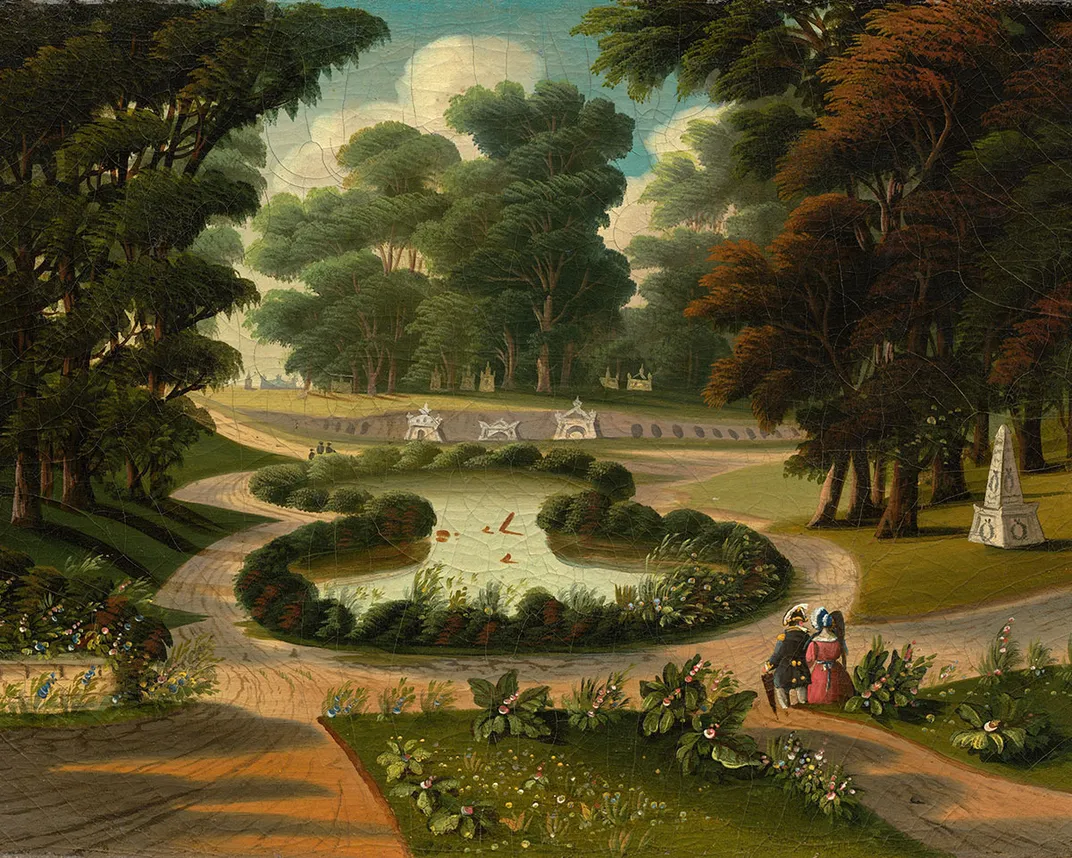
These sprawling, landscaped, country environments were built to replace the grim, overcrowded, often-religious graveyards in town centers. There, reminders of death had been too close to home, too macabre, with the smell of decaying flesh literally wafting through the streets. Proponents of rural cemeteries hoped that separating graves from daily life would help death feel more profound. The way some say that distance makes the heart grow fonder, burial visionaries hoped distance from death would make us wiser. According to historian Stanley French, they believed that if people spent time around the dead in beautiful natural environments, these forces would coalesce to impart the wisdom that “the circle of creation and destruction is eternal.”
The word “cemetery” was derived from the Greek koimeterium, meaning “a place to sleep.” The hope was that this updated model would instill a sense of permanence and pride in the American landscape. Visionaries hoped that offering space for private, eternal rest—a luxury previously reserved for the upper class—to a broader population would build patriotism in the young nation.
But change was looming over the country, and this high-minded hope for cemeteries would be swapped for another priority: money.
The Business of Burial
The Civil War (1861–1865) brought rampant death and, with it, new burial logistics, including how to reunite casualties with their families. Many bodies were not buried at all but left to decompose where they fell. Families with financial means were offered another option.
Inspired by ancient Egyptian techniques, a French pharmacist invented a new embalming procedure that injected arsenic and mercury into the corpse’s bloodstream. If done correctly, embalming could preserve a body long enough to get it home and in the ground. During the war, the federal government recognized the procedure’s potential to reunite families and contracted “embalming surgeons”, with varying levels of training, to provide the service.
Chasing a paycheck, the embalming workforce swelled. According to the National Museum of Civil War Medicine, embalmers pitched their tents at the edge of battlefields and hawked services to living soldiers like “vultures fattening themselves on the dead.”
So began the modern funeral industry. Forty thousand bodies were embalmed in just four years, including Abraham Lincoln’s, whose corpse traveled around the country by train, drawing millions of onlookers. This public spectacle familiarized a wider audience with the procedure, and embalmers responded to growing demand by offering more services, eventually becoming the industry we know today. With professionals to handle what was formerly the family’s work—cleaning, preparing and burying the corpse, even maintaining the gravesite—people became less obligated to spend time around death, ultimately losing touch with these liminal landscapes.
“This mounting division between the spaces of the living and the dead proved detrimental for both,” wrote Keith Eggener, professor of American art and architecture. While many cemeteries fell into neglect, “citizens grew forgetful and detached from their own histories…less meaningfully and enduringly connected to the ground on which they stood.”
Today, many conventional funerary services include embalming in preparation for a public viewing, followed by burial in a chemically treated or metal casket, perhaps inside a concrete vault, all to stave off decomposition. Cemeteries are not verdant green spaces but well-manicured lawns, headstones often upright and largely identical, packed together, deprived of native plant growth and dotted with plastic flowers.
I rarely visit the graves of my own grandparents. This has nothing to do with how much I love them and is more about my aversion to grimness. Without the natural world to help put death in perspective, the grounds feel utilitarian, not alive. The design of these modern “memorial parks” suits their function: to be easy and cheap for the funeral industry to maintain.
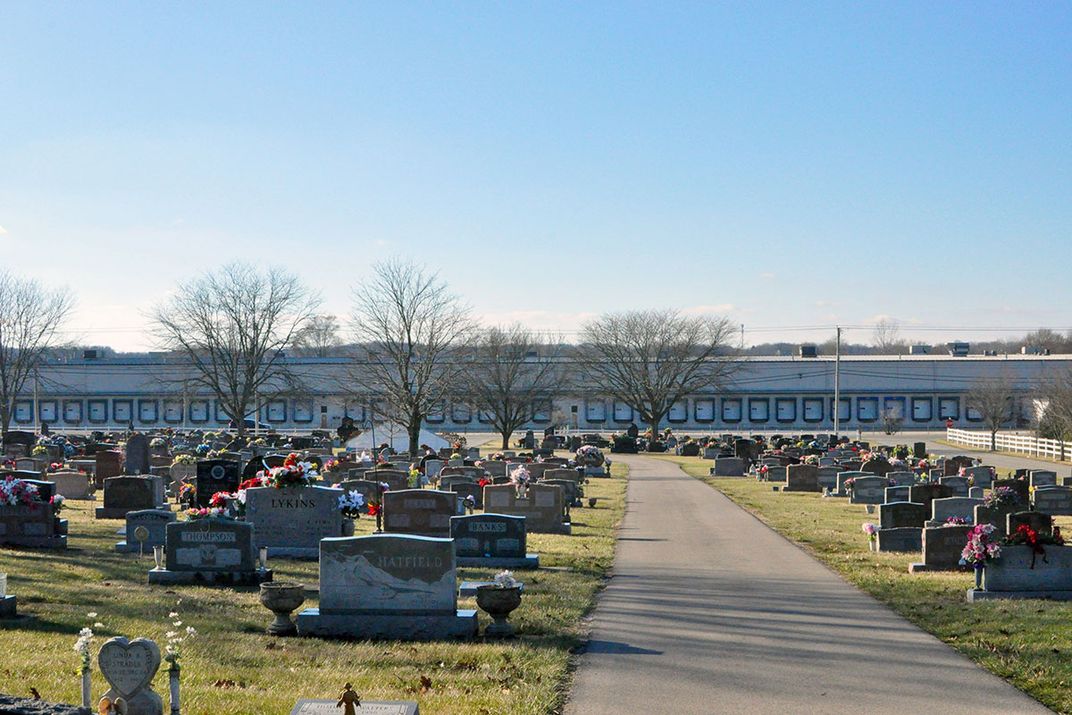
For example, when left alone, the earth around a decomposing body will shift. “Uneven ground makes mowing problematic,” explained undertaker Elizabeth Fournier, “and also reminds living visitors of the unpleasant fact of dead bodies beneath the earth.” Concrete vaults help keep decomposing bodies in their place—out of sight, mind, and the lawn mower’s path.
As I fell deeper into this research, my shovel kept snagging a subterranean layer: the stigma of decay. Western belief systems maintain that, somehow, humans are, or can figure out how to be, outside of nature altogether. These conventional burial practices appeal to our deep desire to control nature, including the powers of death and decay. It wasn’t hard for the funeral industry to sell us the idea that when someone dies, providing them decay-dodging services proves they were loved.
But below the earth, embalmed, inside treated caskets or concrete vaults, our bodies will decompose. In trying to outwit this earthly process, we disrupt a delicate environmental order in favor of methods that are, ultimately, ineffective and environmentally harmful.
The Potential of Our Decay
It all comes back to our relationship with nature. “Life used to be a circle: ashes to ashes, dust to dust,” wrote historian and journalist Jill Lepore, but then people started living longer and seeing life as a progression instead of a cycle. In most contexts, “decline is seen less as natural and inevitable than as a form of failure that most people would prefer to deny or circumvent,” Eggener wrote.
Consider embalming. Its success tapped into logic that dates back to the Scientific Revolution, which changed the way Westerners thought about nature from a nurturing force they were part of, to a machine they could control with their “rational” minds. According to philosopher and ecofeminist Val Plumwood, at some point, we started seeing ourselves above and outside the food chain, forgetting we’re actually “part of the feast in a chain of reciprocity.”
At its most fundamental level, a corpse is a natural organism that, left untreated, will be reclaimed by nature and benefit the surrounding ecosystem, explained the BBC in an article on what happens after we die. “Every species that visits a cadaver has a unique repertoire of gut microbes… [and] all these microbes mingle and mix within the cadaveric ecosystem” and eventually produce rich, organic soil.
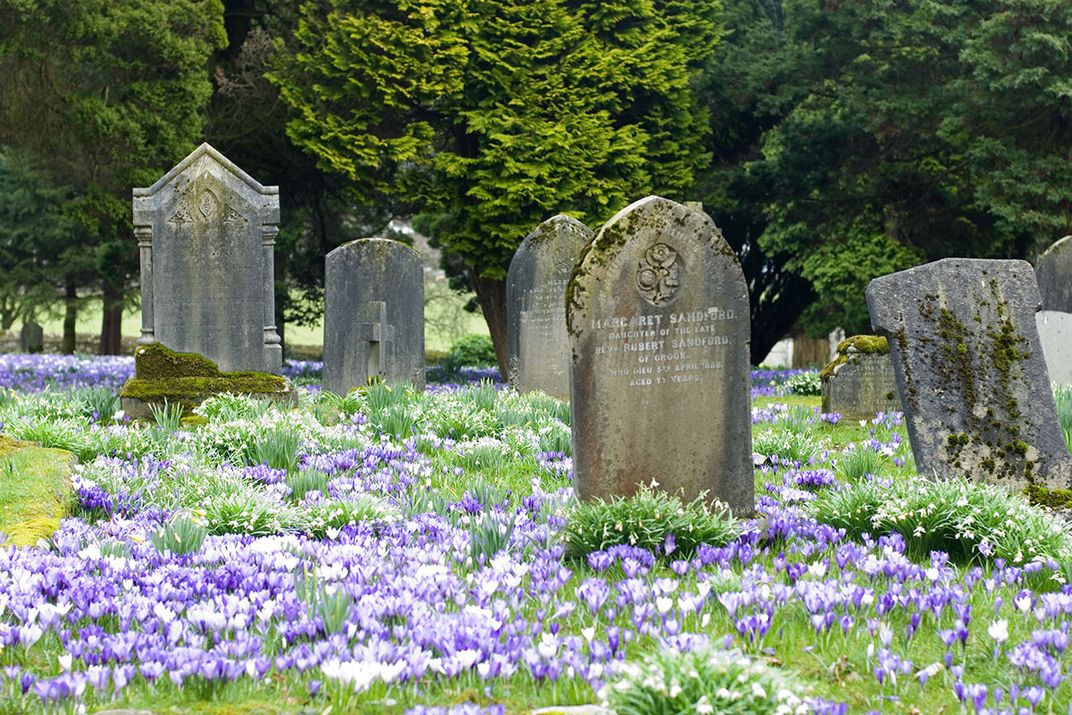
By obstructing the body’s decomposition, we harm the earth. For instance, each year, the process of embalming dumps 800,000 gallons of formaldehyde, a known carcinogen, into American soil. This toxic runoff can leach into water supplies and create environmental and health problems for plants and animals, including humans.
Perhaps we believe that preserving our bodies helps preserve our significance. “Death brings the prospect of oblivion, of social erasure,” Eggener explained. “Recognition of this possibility accounts for much of our fear of death, as well as the impulse to memorialize our loved ones and ourselves.”
This fear of oblivion isn’t unique to Americans, but our response is. Embalming is now almost exclusively practiced in North America, where it is largely understood to be an essential step in the burial process (even though it’s rarely required by law). In many countries and cultures, the process is discouraged, even forbidden. Most states also mandate perpetual burials, which means that when Americans buy plots, they will own them forever—long after their bodies decompose into soil and everyone who remembers them is gone.
Permanence in burial need not be the American goal. In most countries, burial plots are temporary, rented until bodies decompose, their bones relocated, and the plots recirculated. This method cuts down on the amount of space needed to house the dead, who, so long as we exist as a species, will be in perpetual supply. But since Americans prefer permanent burials, we will forever need to develop new land. At a fundamental level, there is privilege in a permanent, marked grave, which implies that the deceased in some way deserves eternal remembrance. Black and Indigenous people in this country have systematically been deprived of this permanence, their graves razed and erased.
“I’m getting cremated,” multiple friends and family declared, resolutely, when I shared what I learned. Each time, I twist my mouth, thinking what to say. I want to respect their choices, but I can’t shake the idea that cremation is blocking decay’s potential.
Conventional burial and cremation currently make up eighty percent of afterlife plans in the United States, but recently, cremation surpassed traditional burial as the most common approach. Cremation’s climbing popularity over the last fifty years is threefold: financial (it is often cheaper than conventional burial), space (the desire to not take up land in perpetuity), and environment (the perception that it is more eco-friendly).
But in fact, cremation is not good for the environment. It demands large amounts of fuel and produces extensive carbon emissions that contribute to global warming—emitting roughly 360,000 metric tons of carbon dioxide in the United States alone each year. Also, conventionally cremated ashes are sterile and do not provide nutrients back to the earth. Not only does cremation cause pollution, it keeps our naturally decomposing bodies from benefiting other life.
Decay Becomes Her
As a child, passing endless cornfields under wide-open skies, I watched as my mom juggled hand-scrawled directions and the car’s grinding gears, searching for the house of her next visit. When she got lost, we pulled into gas stations to unfurl paper maps.
/https://tf-cmsv2-smithsonianmag-media.s3.amazonaws.com/filer_public/3f/b5/3fb57b2d-ad57-40b2-b3c5-59905e05ce59/ohio-cornfield.jpg)
Inside the homes, my memories blur. Family members of the dying gathered in a common area, where I sat with them and watched TV reruns, or picked at pretzels and brownie trays, while my mom was in another room with the patient. Sometimes, the patient came to the main room, snoozed in a La-Z-Boy recliner or made small talk. An uninvited guest, I tried to be unobtrusive. These visits could take hours and were the longest when someone died. My mom needed to bathe the body, destroy medications, and wait for the funeral home, all of which felt endless to me.
My mom, Maureen Dawn, is the rare soul who is willing to sit with death’s discomfort. She got her first hospice job in 1981 while grieving a personal loss. She was a young nurse who had been working in a cancer unit, watching her patients be continuously revived, wondering if there was a more peaceful way to help them pass. She felt idealistic about the hospice movement, and the role resonated with her. She describes the choice as “opening up a lifetime of work.” Her patience, presence, and spirituality made it a good fit. Over the years, she’s been a trusted confidante to many, from patients to seniors at “Death Cafes.” As a family friend put it, “If I were dying, there’s no one I’d rather have there.”
My personality is a bit thornier, though. Throughout my early thirties, I maintained the belief that this topic was best left to “the grownups,” those more temperamentally suited, who would help me transition if my death is foreseen. But reading in my cemetery, I felt ready to explore alone.
There are two flat graves I visit often, old and worn, marked simply “Mother” and “Father.” They are snugly embedded at the base of a large tulip tree, in the small hill that swelled around its growing roots. Hundreds of years ago, these bodies fertilized the soil, and the tree grew larger and stronger, eventually subsuming them in a massive embrace.
One day, I put down my book and lay on the hill between these graves, trying to imagine what it might feel like to decompose. Cradled by this serene landscape, I understood my life in new terms. Gazing up at the dancing leaves, I allowed the rustling chorus to lull me into momentary rest. Someday, like so many before and after me, I will stop living in my current form. Because my decomposing body will benefit other life, I will continue to matter. Soon, ants and critters tickled my skin, bringing me back to the present, already exploring my potential.
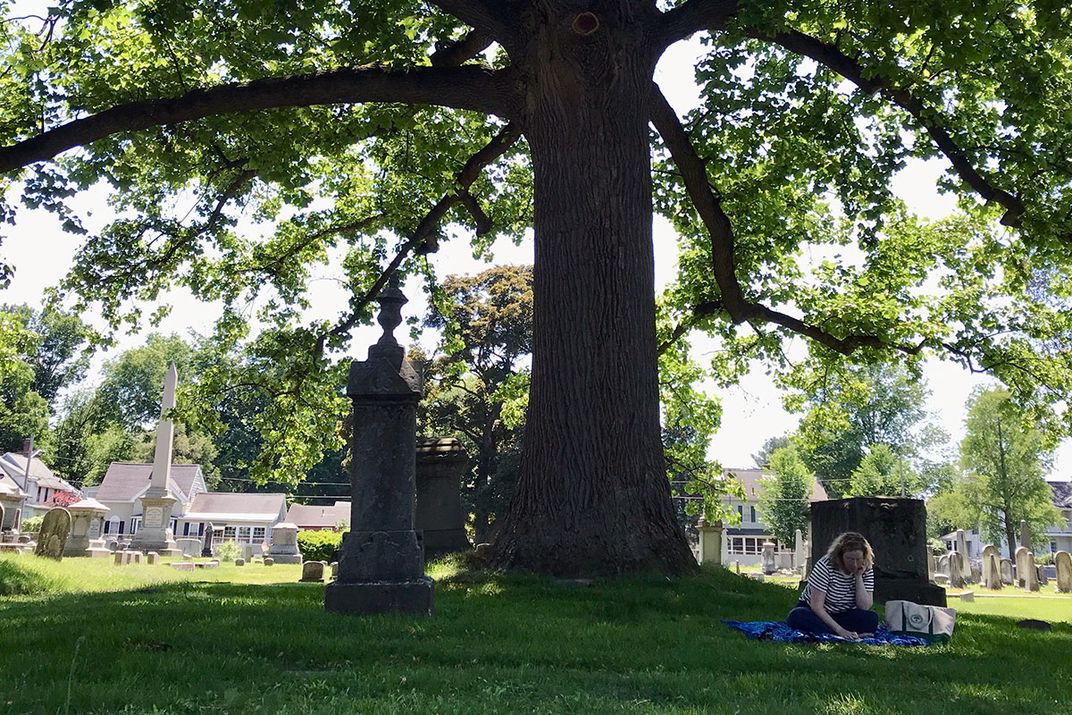
The Lands Decay Can Conserve
With burial on the brain, I visited my mom in Ohio, returning to the landscapes of my youth. I had been reading about an environmentally friendly alternative to conventional burial called “green burial,” and I wanted to experience a green cemetery for myself.
I asked my mom if she’d like to go for a drive. I wanted her company; I no longer needed her as my guide. Once again, we set out down cow-dotted roads to pay a visit with death. We were headed to Kokosing Nature Preserve, a conservation green burial ground in rural Gambier, Ohio.
According to the Green Burial Council, green burial is a general term used to describe different methods of “post-death care” that are natural, nontoxic, and sustainable for the environment, offering “the restoration and/or preservation of habitat.” Specifics will vary between green cemeteries, but these methods are more connected with the process of natural decay than conventional burials.
Formaldehyde-based embalming fluids are not allowed, although one nontoxic “green embalming fluid” is, which smells of vanilla or clove. This formula provides about two or three days of bodily preservation, compared to about a week with conventional embalming. Many families who pursue green burial will rely on funeral homes for refrigeration to postpone decay while arrangements are made. There are no treated caskets or concrete vaults, nor any kind of non-biodegradable container that obstructs the process of natural decomposition. Instead, bodies are buried in shrouds, wicker baskets, or other compostable containers. Headstones are not polished or machine-cut but likely made from local stone that lays flat in the ground, in harmony with the landscape. Green burial has been gaining popularity since 2005, but it still only makes up five percent of all U.S. burials.
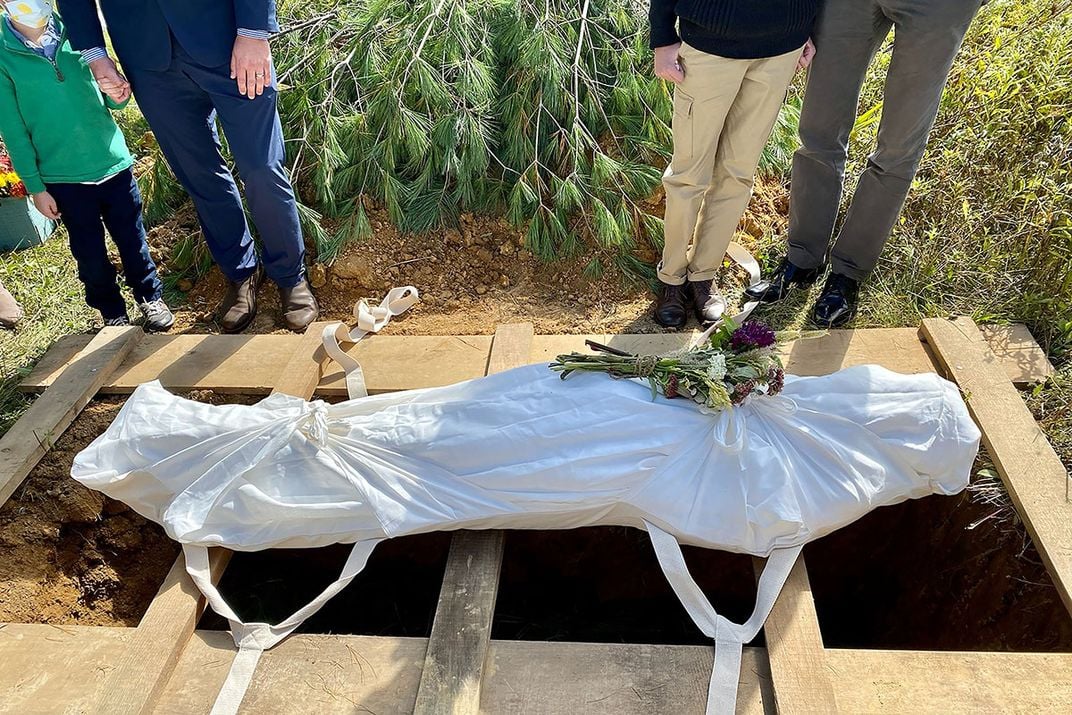
We pulled into the nature preserve and were greeted by Amy Henricksen, the project coordinator and cemetery steward. The property spans woods and prairie and was once a golf course before the Philander Chase Conservancy, the land trust of nearby Kenyon College, purchased it in 2013 to protect its fifty-one acres from development. Twenty-three of those acres are now a conservation burial ground, which the conservancy created to help fund the ongoing protection of nearly 6,000 nearby acres.
The conservancy put a great deal of love and labor into returning the golf course to a natural, native habitat in harmony with surrounding life. They planted native prairie grasses and wildflowers like bee balm, milkweed, and prairie wingstem. They removed invasive, diseased trees and replaced them with hundreds of natives like dogwood and maples, and returned a spring-fed pond to a natural wetland. Each season, the land goes through changes that remind Henricksen of the circle of life. The preserve is and will continue to be open to the public for reflection and recreation.
People who choose to be buried here are often committed to conservation, environmentalism, or are attached to this particular landscape, Henricksen told us, but there’s no “typical” service. One man felt ready to move on surreptitiously, without a headstone, convinced that no one would visit him. Another man’s grandchildren serenaded him with kazoos, humming the lullabies he once sang them. Other families throw big parties, drink bourbon, sing John Prine songs, and string prayer flags between the trees. Like each person, each burial is unique.
Families often tell Henricksen how the land helps them grieve. “Those who return to visit are moved by the sense that they can feel their loved one’s presence,” she explained. “It’s in the flowers, the trees, the birds, the butterflies, and the dragonflies.” When I die, this is the kind of place I want my body to go. The kind of place I want to be alive for those I love.
While Henricksen didn’t grow up with dreams of becoming an expert in green burial, she’s become passionate about its potential for environmental conservation. Still, she acknowledges that it won’t appeal to everyone. She sees part of her job as facilitating conversations about death and dying as a natural piece of life and helping people plan for their own “good death—whatever that may look like to them.”
There are other environmentally conscious ways for the human body to decompose, but green burial is the most accessible right now. Human composting, which turns remains into organic soil that can be used for planting a garden or a special tree, is currently only legal in Colorado, Oregon, and Washington. In a 2011 TED Talk, entrepreneur Jae Rhim Lee proposed a “mushroom burial suit.” Likely, as we embrace our place in the circle of life, more options will become accessible.
There is not one right approach. Various personal, cultural, and religious decisions will be made, some more sustainable than others. Different faith teachings, like Islam, have been practicing what is essentially green burial for thousands of years. In traditional Jewish burials, embalming is not allowed, nor are other methods that impact natural decomposition, including cremation. In 1949, Aldo Leopold wrote The Sand County Almanac, a landmark work of environmental conservation. In it, he offered us some advice: “a thing is right when it tends to preserve the integrity, stability, and beauty of the biotic community. It is wrong when it tends otherwise.”
It’s not too late to reimagine cemeteries, to ask what their potential could be for the living and the land. We don’t even have to start from scratch; we can look to history.
I’m imagining acres of old-growth trees, lovingly fertilized with human remains, offering eternal enchantment and exploration to the living. Colorful wildflowers, seamlessly interlaced with grave markers, enticing us into collective respite from city streets with those we’ve lost. Rolling fields, safe from development, where nature can flourish, and we can think. That’s the potential of our decay.
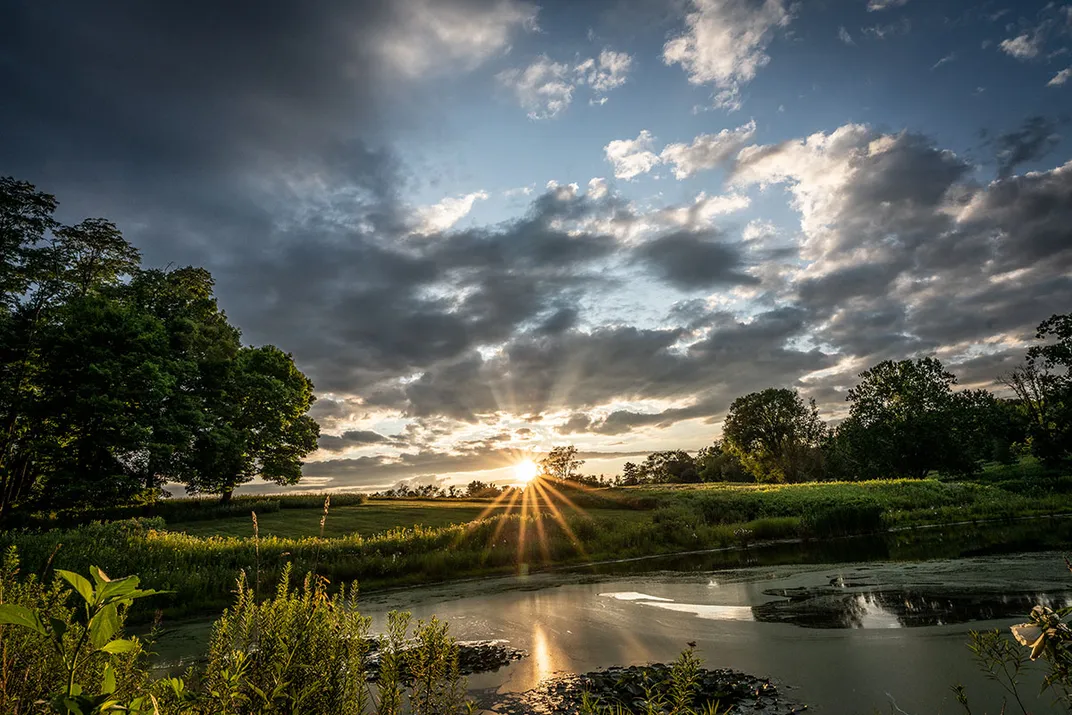
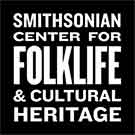
/https://tf-cmsv2-smithsonianmag-media.s3.amazonaws.com/filer_public/5d/b2/5db2bfe8-ec32-4300-9025-1f73e7aba535/woodland-cemetery-dayton-ohio.jpg)
/https://tf-cmsv2-smithsonianmag-media.s3.amazonaws.com/filer_public/0c/df/0cdfb2cf-b364-47c7-be34-a2b32d399041/st-pauls-churchyard-new-york.jpg)
/https://tf-cmsv2-smithsonianmag-media.s3.amazonaws.com/filer_public/38/1b/381bcab9-5836-4494-b1a6-a92494e72f78/embalming-fredericksburg-va.jpg)
/https://tf-cmsv2-smithsonianmag-media.s3.amazonaws.com/filer_public/0f/2a/0f2ae6b7-877f-4280-a69a-4f493b31687f/lincolns-funeral.jpg)
/https://tf-cmsv2-smithsonianmag-media.s3.amazonaws.com/filer_public/ac/6a/ac6a7cd8-d870-4ac9-b643-edd9f317a432/kokosing-nature-preserve-meadow.jpg)
/https://tf-cmsv2-smithsonianmag-media.s3.amazonaws.com/filer_public/7f/24/7f24dfef-0ea5-4034-9c0d-7e7f765bc0ea/kokosing-nature-preserve-woodlands.jpg)